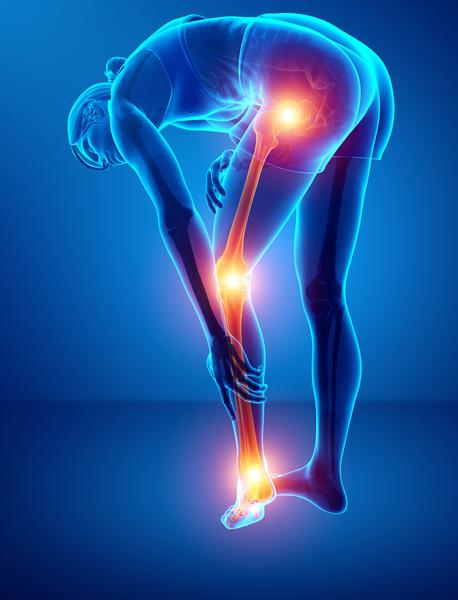Complex Regional Pain Syndrome
Complex Regional Pain Syndrome (CRPS) is a chronic nerve pain condition that usually affects the arms, legs, hands or feet.
Complex Regional Pain Syndrome can occur after injury or trauma and is believed to be caused by damage to, or malfunction of, the nervous system which occurs after an injury, such as a fracture. Rarely, CRPS can affect other body parts, such as the face.
Symptoms range from mild to severe, and may last months or years. The cause of CRPS is still unknown, but treatment aims to relieve symptoms and restore limb function (movement and activity).
Most people recover fully, but the condition can recur and for a small group of people with Complex Regional Pain Syndrome, symptoms may be severe and persist for years. Complex Regional Pain Syndrome used to be known as reflex sympathetic dystrophy (RSD).
Females are three times more likely to be affected than males. Complex Regional Pain Syndrome affects people in different ways and one person’s response to treatment will be different from another person’s.
Symptoms of complex regional pain syndrome (CRPS)
The symptoms of CRPS may include:
- burning pain in the arm, hand, leg or foot;
- pain that changes in intensity, but often feels much worse than may be expected;
- loss of fine motor control;
- tremors or spasms;
- stiffness;
- changes to the skin, hair and nails on the affected limb;
- the affected limb is warmer or colder than the unaffected limb; or
- the affected limb is sweatier or drier than the unaffected limb.
Causes of complex regional pain syndrome
CRPS is a pain disorder that can affect different body systems. We do not understand the cause well. Most health professionals believe that a few different factors working together may trigger the symptoms. The way each of these factors contributes to the onset of CRPS may be different for each person.
Treatment of complex regional pain syndrome
There is no simple cure for CRPS. Treatment often involves a number of approaches and aims to restore movement and function of the affected limb.
Options may include:
- Medication – such as pain-relieving medications.
- Physical therapy – Typically, treatment starts with strategies to reduce pain and swelling. This is followed by gentle movement, then muscle-strengthening exercises to improve the functioning of the limb and, finally, exercises to improve the functioning of the person’s whole body.
- Counselling and psychological support – for example, to help the person cope with stress, depression and chronic pain.
- Intervention therapy – such as Dry Needling, Injection Therapy (nerve blocks) and Shockwave Therapy. The most commonly used is a sympathetic ganglion block, which involves the use of a local anaesthetic to stop some of the nerves in the affected limb from working.
- Implant therapy – an operation to place a device such as an electrode or a medication-delivery system is placed into the person’s body. The device helps to manage symptoms, including pain. However, implant therapy is considered a last resort when all other methods of pain management have failed.
At the Foot and Ankle Clinic our highly qualified team of Podiatrists are all members of the Australian Podiatry Association and offer a combined 50 years’ experience.
Put your feet in our hands! See us today in Chadstone, Moe, Sale, Traralgon, Warragul & Online Store and Retail Enquiries. NO REFERRAL NEEDED!.


